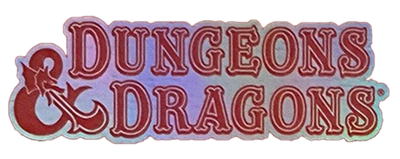Edit Page
The edit can be undone. Please check the comparison below to verify that this is what you want to do, and then publish the changes below to finish undoing the edit.
| Latest revision | Your text | ||
| Line 1: | Line 1: | ||
{{OGL Top}} |
{{OGL Top}} |
||
| − | + | =The Basics= |
|
| + | |||
| − | ===The Core Mechanic=== |
+ | =====The Core Mechanic===== |
| + | |||
Whenever you attempt an action that has some chance of failure, you roll a twenty-sided die (d20). To determine if your character succeeds at a task you do this: |
Whenever you attempt an action that has some chance of failure, you roll a twenty-sided die (d20). To determine if your character succeeds at a task you do this: |
||
| + | |||
* Roll a d20. |
* Roll a d20. |
||
| + | |||
* Add any relevant modifiers. |
* Add any relevant modifiers. |
||
| + | |||
* Compare the result to a target number. |
* Compare the result to a target number. |
||
| Line 10: | Line 15: | ||
===Dice=== |
===Dice=== |
||
| + | |||
Dice rolls are described with expressions such as “3d4+3,” which means “roll three four-sided dice and add 3” (resulting in a number between 6 and 15). The first number tells you how many dice to roll (adding the results together). The number immediately after the “d” tells you the type of die to use. Any number after that indicates a quantity that is added or subtracted from the result. |
Dice rolls are described with expressions such as “3d4+3,” which means “roll three four-sided dice and add 3” (resulting in a number between 6 and 15). The first number tells you how many dice to roll (adding the results together). The number immediately after the “d” tells you the type of die to use. Any number after that indicates a quantity that is added or subtracted from the result. |
||
=====d%===== |
=====d%===== |
||
| + | |||
Percentile dice work a little differently. You generate a number between 1 and 100 by rolling two different ten-sided dice. One (designated before you roll) is the tens digit. The other is the ones digit. Two 0s represent 100. |
Percentile dice work a little differently. You generate a number between 1 and 100 by rolling two different ten-sided dice. One (designated before you roll) is the tens digit. The other is the ones digit. Two 0s represent 100. |
||
===Rounding Fractions=== |
===Rounding Fractions=== |
||
| + | |||
In general, if you wind up with a fraction, [[SRD:Round|round]] down, even if the fraction is one-half or larger. |
In general, if you wind up with a fraction, [[SRD:Round|round]] down, even if the fraction is one-half or larger. |
||
| Line 21: | Line 29: | ||
===Multiplying=== |
===Multiplying=== |
||
| + | |||
Sometimes a rule makes you multiply a number or a die roll. As long as you’re applying a single multiplier, multiply the number normally. When two or more multipliers apply to any abstract value (such as a modifier or a die roll), however, combine them into a single multiple, with each extra multiple adding 1 less than its value to the first multiple. Thus, a double (×2) and a double (×2) applied to the same number results in a triple (×3, because 2 + 1=3). |
Sometimes a rule makes you multiply a number or a die roll. As long as you’re applying a single multiplier, multiply the number normally. When two or more multipliers apply to any abstract value (such as a modifier or a die roll), however, combine them into a single multiple, with each extra multiple adding 1 less than its value to the first multiple. Thus, a double (×2) and a double (×2) applied to the same number results in a triple (×3, because 2 + 1=3). |
||
